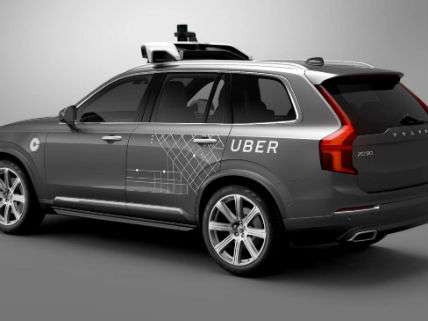Self-Driving Cars: Half-Assed Automation Is Stupid and Dangerous
Also, Uber self-driving project launches in Pittsburgh

It's crazy to ride/drive in a car that you need to take control over only when it's about to crash. You may reading a map; talking on the phone; even have drifted off a bit, lulled into a dangerous complacency by the fact that the semi-automated car works just fine in most situations. Then the klaxon rings telling you to take over RIGHT NOW. Of course, you haven't been paying attention, so it will take at least a few vital seconds for you to figure out why your car's computer has panicked and summoned you to take the wheel. Good luck with that!
Yet, that is just the future that a lot of automakers seem to be aiming for as they inch toward full self-driving capability. A nice article in the Washington Post describes this fork in the road toward the self-driving car future. Some manufacturers like Audi will keep adding features that allow for mostly hands-free (but not attention-free) driving on, say, limited access highways. On the other hand, Ford, teaming up with Google, aims for fully autonmous vehicles. Initially their vehicles will operate within specified areas, such as, ride hailing services in cities, but eventually they will safely roam free on America's roads and streets.
With regard to the imperative of full automation, in my July article, "Will Politicians Block Our Driverless Future?," I reported:
[University of Texas engineer Kara] Kockelman argues that semi-autonomous vehicles, or what NHTSA calls "limited self-driving automation," present a big safety problem. With these so-called Level 3 vehicles, drivers cede full control to the car for the most part but must be ready at all times to take over if something untoward occurs. The problem is that such semi-autonomous cars travel along safely 99 percent of the time, allowing the attention of their bored drivers to falter. In an August 2015 study NHTSA reported that depending on the on-board alert, it took some drivers as long as 17 seconds to regain manual control of the semi-autonomous car. "The radical change to full automation is important," argues Kockelman. "Level 3 is too dangerous. We have to jump over that to Level 4 full automation, and most manufacturers don't want to do that. They want protection; they want baby steps; they want special corridors; they won't get that."
Consequently the first law of the robocar revolution, according to [former Google consultant Brad] Templeton, is "that you don't change the infrastructure." Whatever functionality is needed to drive safely should be on board each individual vehicle. "Just tell the software people that this is the road you have to drive on and let them figure it out," Templeton says. "Everything you must do is in software or you lose." Some self-driving shuttles confined to specific areas—airports, pedestrian malls, college campuses—will be deployed, but they are not the future of this technology.
In other news, Uber announced that it will begin deploying a fleet of 100 self-driving Volvos on the streets of Pittsburgh next month. While the cars will drive themselves, each car will have a "chaperone" to make sure that all goes smoothly and an engineer to record what is going on. As Bloomsberg reports:
In Pittsburgh, customers will request cars the normal way, via Uber's app, and will be paired with a driverless car at random. Trips will be free for the time being, rather than the standard local rate of $1.05 per mile. In the long run, [Uber CEO] Kalanick says, prices will fall so low that the per-mile cost of travel, even for long trips in rural areas, will be cheaper in a driverless Uber than in a private car. "That could be seen as a threat," says Volvo Cars CEO Hakan Samuelsson. "We see it as an opportunity."
In the meantime, the MIT startup NuTonomy has just launched the first ever public test of ride-hailed fully self-driving cars in Singapore. And like Uber's Pittsburgh Project, NuTonomy's cars will, for the time-being, have an engineer onboard to monitor and take over driving if necessary.
These are steps in the right direction. As far as I am concerned, the self-driving future can't happen too soon.
